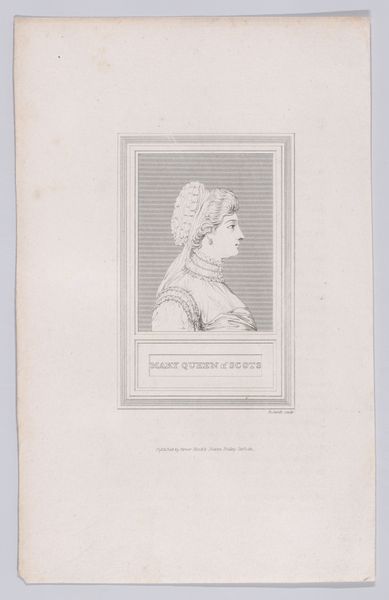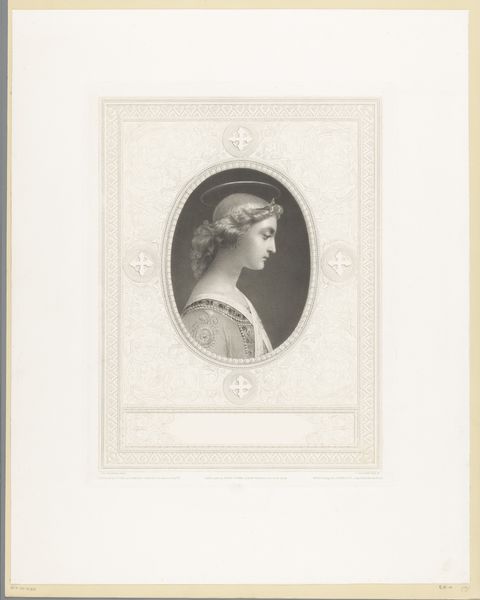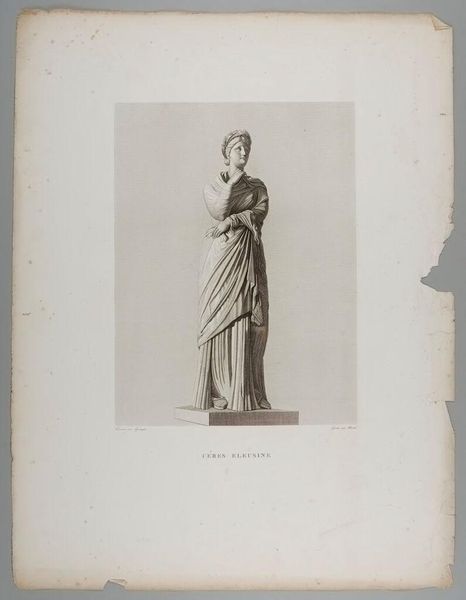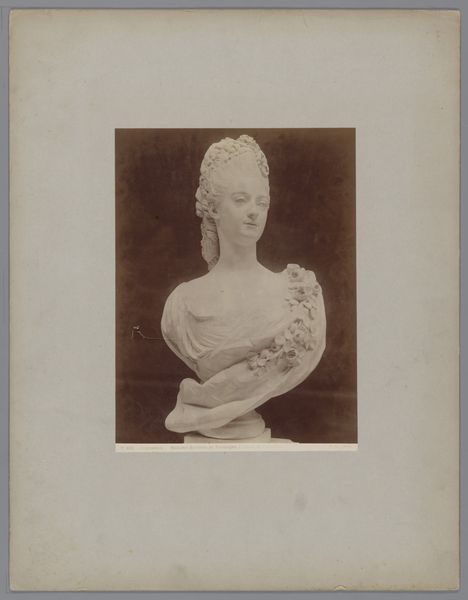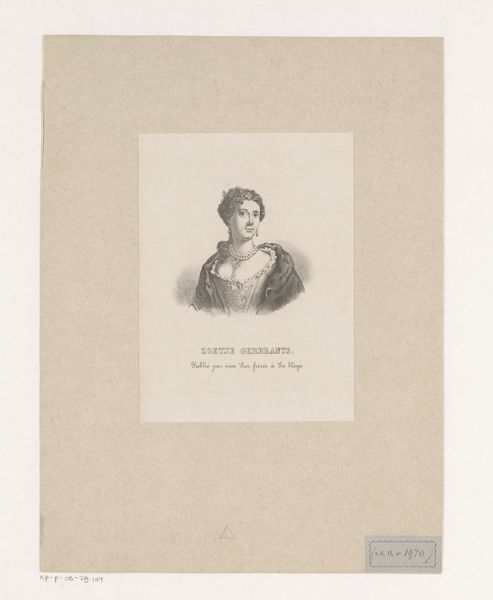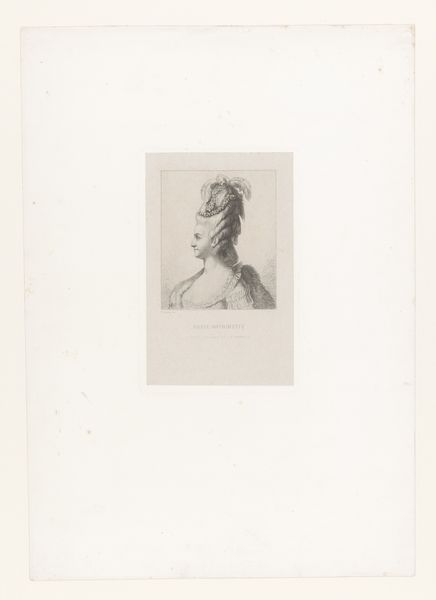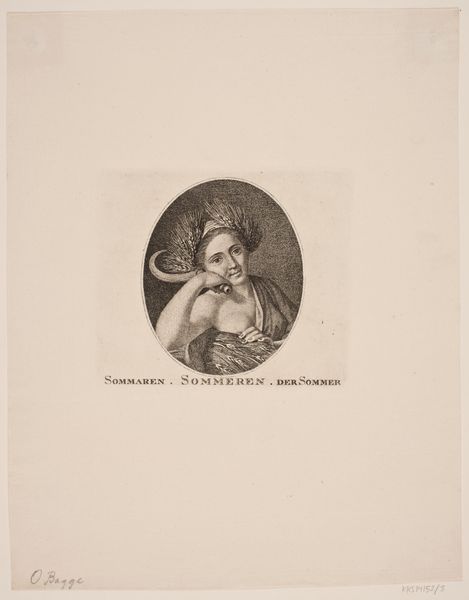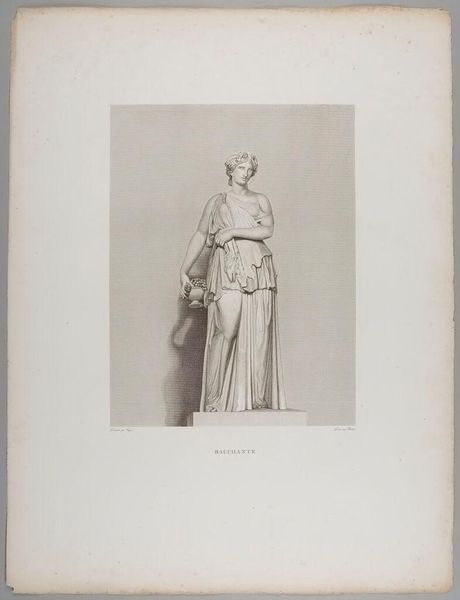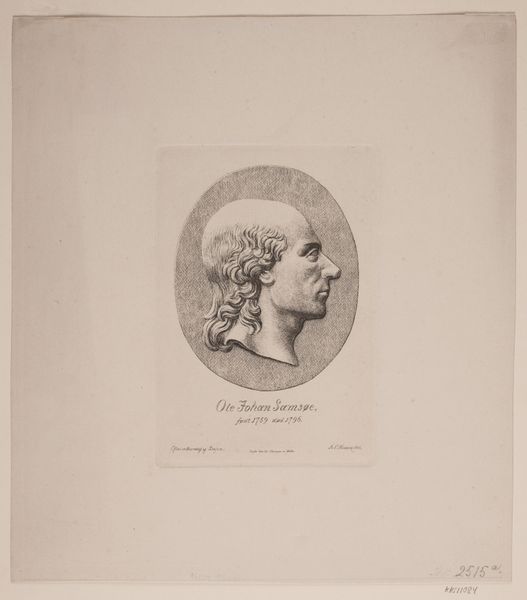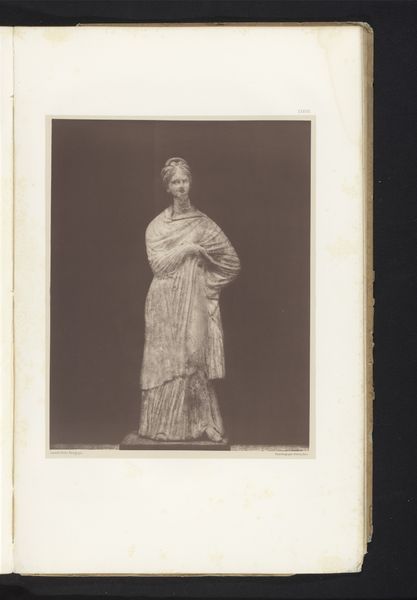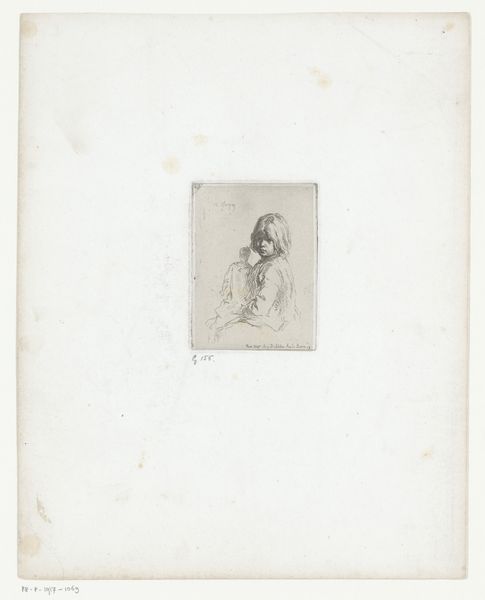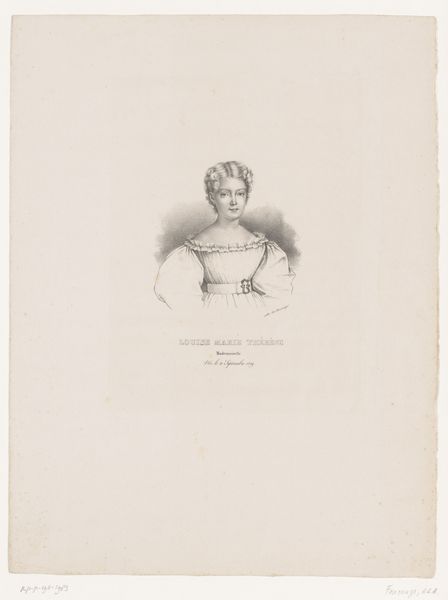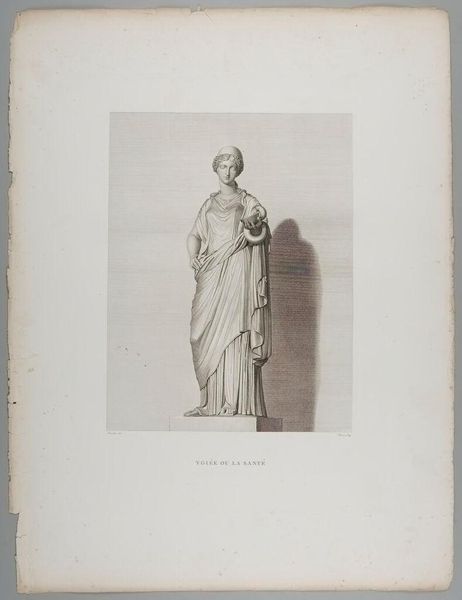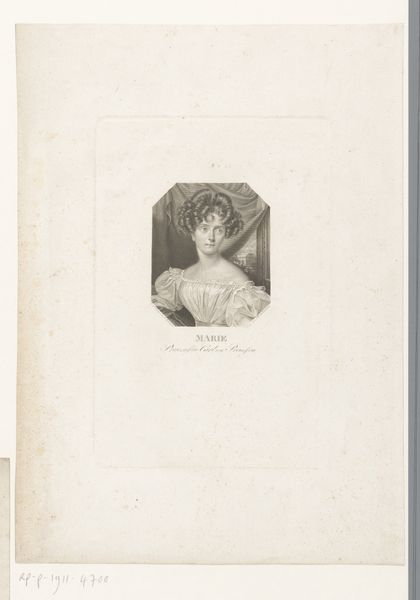
drawing, print, paper, engraving
#
portrait
#
drawing
# print
#
paper
#
history-painting
#
academic-art
#
engraving
#
realism
Dimensions: 168 × 106 mm (plate); 235 × 161 mm (sheet)
Copyright: Public Domain
Editor: This is "The Late Mrs. Morris," a drawing and engraving done by David Claypoole Johnston in 1828. It's a somber portrait, a memorial perhaps? I’m curious about the details of the headdress, and it's fascinating how much emotion is conveyed in a simple black-and-white print. How do you interpret this work? Curator: Indeed. While on the surface it appears a straightforward memorial, it resonates much deeper when considered through the lens of its symbols. Note the widow's cap. In 1828, the accoutrements of mourning held significant social weight. They spoke volumes about status, piety, and remembrance. How does the rendering of her attire inform your understanding of her station? Editor: I see your point. The ornate rendering suggests she held a position of importance, perhaps wealth? Curator: Precisely. Moreover, the “late” is a fascinating choice, isn't it? It explicitly memorializes her, placing her firmly in the past. The way Johnston meticulously details her face also reveals his intentions; what emotional undertones are apparent, if any? Editor: There's a slight pursing of the lips, a hint of seriousness…maybe even resolve? Curator: An excellent observation. Her direct gaze, coupled with this expression, defies pure sorrow. Consider what cultural memories Johnston is evoking here. She isn’t simply “gone.” She remains, enshrined in this image, imbued with a lasting, albeit quiet, dignity. Does understanding the symbology shift your initial impression? Editor: Absolutely. Seeing the depth of social and personal meaning makes it so much more powerful than just a portrait. It's like unlocking a hidden language. Curator: Yes. And it reminds us that images are never neutral; they carry echoes of their time, shaping and preserving cultural memory.
Comments
No comments
Be the first to comment and join the conversation on the ultimate creative platform.
